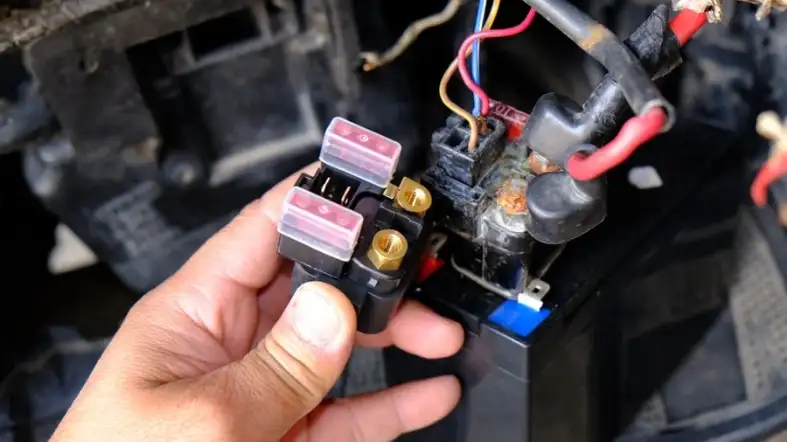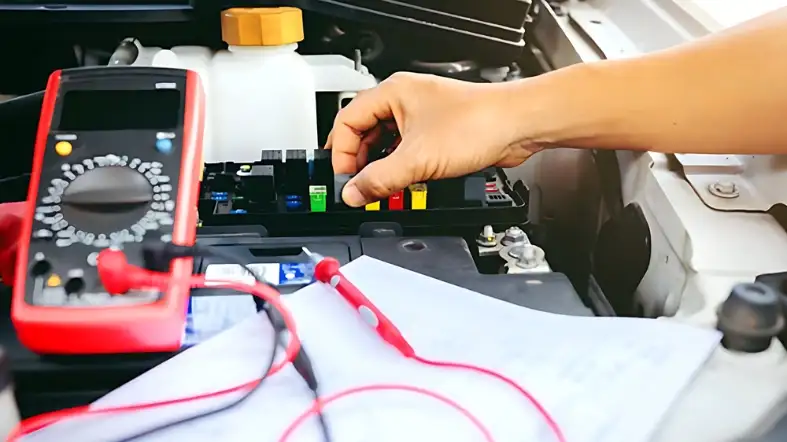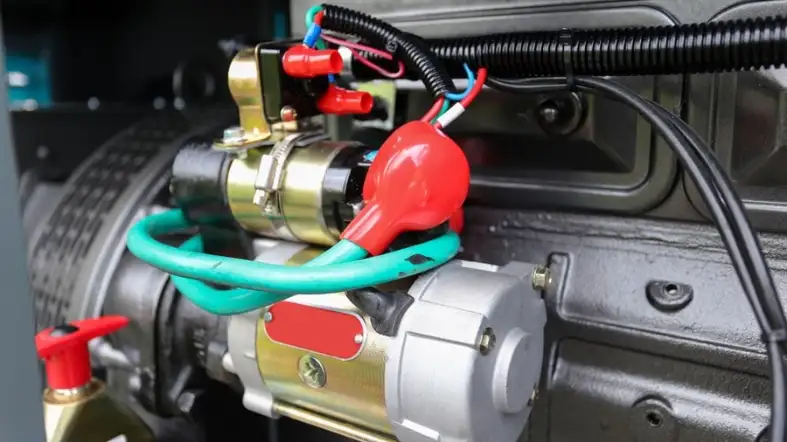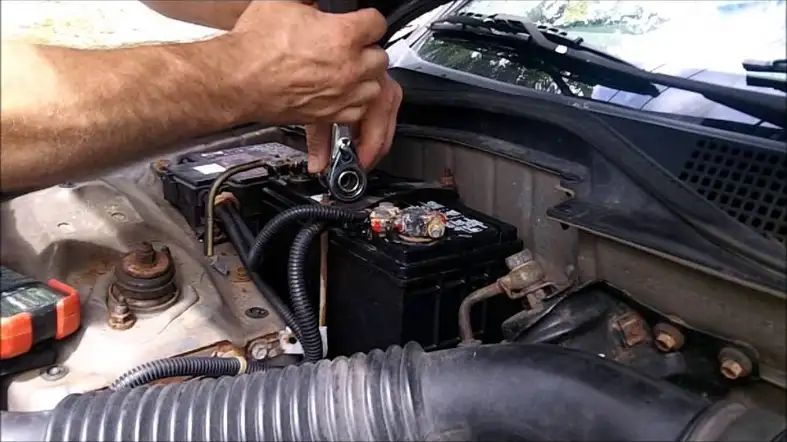Curious about car troubles? If you’re asking, “What are the symptoms of a bad starter relay?” then you’re in the right place.
Don’t let mysterious engine issues leave you stranded. In this article, we’ll unravel the warning signs that tell you it’s time to replace your starter relay.
Say goodbye to unexpected breakdowns and hello to smoother rides.

What are the symptoms of a bad starter relay?
Here are some common signs that indicate a faulty starter relay:
Failure to Start or Crank
When your starter relay goes kaput, your vehicle won’t respond when you turn the key.
It’s like your car is saying, “I’m not ready to wake up yet!” You’ll hear silence instead of the engine roaring to life.
This can be frustrating and leave you stranded when you least expect it.
Intermittent Starting Issues
Picture this: your car starts just fine today, but tomorrow it decides to play hard to get.
That’s what happens with intermittent starting issues caused by a faulty starter relay. It’s like having a moody car that keeps you guessing when it’ll cooperate.
Frequent Stalling or Sputtering
Imagine cruising down the road, and suddenly your engine decides to throw a tantrum.
Frequent stalling or sputtering can be a telltale sign of a struggling starter relay. Your vehicle may act like it’s running on empty, making for a bumpy ride.
No Response When Key Is Turned
Turning the key is supposed to kickstart your car into action, but when there’s no response, it’s like your vehicle is taking a nap.
A bad starter relay can leave you feeling puzzled and stuck, wondering why your car won’t budge.
Electrical Malfunctions
A malfunctioning starter relay can wreak havoc on your vehicle’s electrical system.
Your lights might flicker, your radio might go silent, or other electrical malfunctions could pop up unexpectedly.
It’s like your car’s way of saying, “I’m not feeling quite right today.”
A bad starter relay can cause a range of issues, from refusing to start or crank to intermittent troubles, frequent stalling or sputtering, a lack of response when you turn the key, and unexpected electrical malfunctions.
These symptoms can be frustrating, but they’re your car’s way of telling you it needs some attention.
What are the Causes of a Bad Starter Relay?
These are the causes of a bad starter relay:

Electrical Overload
Electrical overload is like trying to carry too many books at once it’s just too much for the relay.
When your car’s electrical system asks the starter relay to handle more current than it should, problems arise.
Picture this: a faulty alternator or a short circuit can send a surge of electricity through the relay.
This surge can overwhelm the relay, causing it to heat up excessively and ultimately leading to its failure.
Heat Exposure
Imagine sitting in the scorching sun for too long that’s what heat exposure feels like for a starter relay.
The engine compartment, where the relay usually lives, can get extremely hot.
This constant exposure to high temperatures can be tough on the relay. Over time, it weakens the relay’s internal components, making them prone to damage and failure.
Excessive Wear and Tear
Think about your favorite pair of sneakers that you’ve worn day in and day out.
Just like those sneakers, a starter relay can suffer from excessive wear and tear because it’s used a lot.
Every time you start your car, it relies on the relay to switch high currents. This constant switching can wear down the electrical contacts inside the relay.
Eventually, these contacts can wear out, leading to problems with starting your vehicle.
Manufacturing Defects
Imagine buying a toy that falls apart as soon as you open the box. That’s what happens with a starter relay that has manufacturing defects.
When a relay isn’t made with the utmost care and quality, it can have hidden weaknesses.
These weaknesses might include poorly done soldering or the use of subpar materials.
These defects can rear their ugly heads and cause the relay to malfunction prematurely.
Moisture and Corrosion
Moisture and corrosion are like unwanted guests in the electrical system’s party. When water or moisture gets into the relay, it can spell trouble.
It causes the electrical contacts inside to corrode.
This corrosion disrupts the flow of electricity, making it difficult for the relay to do its job properly.
Imagine trying to talk with a mouthful of peanut butter. It’s tough to get the message across.
Weak or Dead Battery
A dead or weak battery is like running a race with an untied shoelace. The battery gives the required power which activates the relay and starts the engine.
If there is not enough juice from the battery, the relay has to work twice as hard.
This can result in burnout and damage, leaving you with a car that does not start when you need it the most.
Incorrect Installation
Do not install incorrectly as a square peg in a round hole. The relay will not work in the way intended if it is not connected correctly or is installed. Proper installation is crucial.
A small mistake may result in a malfunctioning relay, a kind of trouble that nobody wants when starting their car.
A Simple Diagnostic Guide
Here is a simple diagnostic guide:

Checking for Symptoms
Watch out for certain symptoms to confirm a bad starter relay. Listen for a click when you turn the key.
Look for intermittent starting issues. There are signs of a starter relay malfunction.
Inspecting the Battery
Make sure your car battery is also in good condition. Starter relay issues can be mimicked by a weak or dead battery.
Look for corrosion on the battery terminals. If it is necessary, clean them for better connection.
Testing with a Multimeter
Get a multimeter, a tool to measure electrical voltage. Connect the multimeter to the battery.
Ensure that there is enough voltage to start it up healthy. A low voltage reading could be a faulty relay.
Locating the Starter Relay
The starter relay is usually found in the engine compartment. Refer to your car’s manual to pinpoint its location.
It’s usually a small, rectangular box near the battery or fender.
Checking Relay Connections
Inspect the relay’s wiring and connections. Look for loose wires or signs of damage. Ensure all connections are tight and secure.
Faulty connections can lead to starter relay issues.

Maintenance Tips for Starter Relays
Starter relays are crucial components in your car’s ignition system. To ensure they work reliably, here are some essential maintenance tips:
Regular Cleaning
Cleaning the starter relay is a simple yet effective way to maintain it. Start by disconnecting the battery to avoid electrical shock.
Locate the starter relay, which is often near the battery or in the engine compartment.
Use a soft brush or compressed air to remove dirt and debris that may have accumulated. Be gentle to avoid damaging any wires or connections.
Cleaning helps prevent dust and grime from interfering with the relay’s function.
Securing Connections
Securely connecting the wires to the starter relay is crucial. Loose connections can lead to electrical problems.
Check all the wires connected to the relay for any signs of wear or damage.
Tighten any loose bolts or nuts on the relay. Ensure that the wires are firmly attached and not frayed.
A secure connection ensures that electrical signals flow smoothly.
Preventing Corrosion
Corrosion can be a starter relay’s worst enemy. It can disrupt the electrical flow and lead to starting issues.
To prevent corrosion, regularly inspect the relay and its connections.
If you spot any corrosion, use a wire brush or sandpaper to gently remove it. Apply a thin layer of dielectric grease to the cleaned connections.
This grease acts as a barrier against moisture and prevents future corrosion.
Battery Health
A healthy battery is essential for a starter relay to function correctly. Check your car’s battery regularly for signs of aging or damage.
If you notice a weakened battery, it can strain the starter relay and lead to problems.
Make sure the battery terminals are clean and free from corrosion. If your battery is old and not holding a charge, consider replacing it to avoid putting extra stress on the starter relay.
Addressing Heat Issues
Starter relays are hot when in operation. Relay failure due to excessive heat. Make sure the relay is well ventilated to dissipate heat.
Look out for any traces of overheating like burnt marks and discoloration.
It is imperative to tackle the root of the issue which is either a malfunctioning starter motor or wiring problem in case of the above symptoms.
Professional Check-ups
Finally, get a professional inspector to inspect your starter relay. Mechanics can identify problems that you might not notice, and they have special tools to do that.
They can see problems developing before they result into costly breakdowns.
Cleaning your starter relay, ensuring secure connections, guarding against corrosion, observing battery condition, managing heat, and professional inspection are some of the regular maintenance procedures.
Following these maintenance tips will help your starter relay function reliably, keeping your car on the road.
FAQs
Can a Bad Starter Relay Cause Other Problems With My Vehicle?
Yes, a bad starter relay can cause other issues, such as draining the battery.
Is It Possible to Replace the Starter Relay Myself, or Do I Need a Mechanic?
If you have experience working with electrical components and the necessary tools, you may be able to replace the starter relay yourself. However, if you’re not comfortable, it’s best to have a mechanic do it.
How Do I Know If the Problem Is the Starter Relay or Another Component?
If you hear a clicking sound when you turn the key and experience starting problems, it’s likely the starter relay is the issue. However, it’s best to have a mechanic diagnose the problem.
How Much Does It Cost to Replace a Starter Relay?
The cost of replacing a starter relay can vary, but generally ranges from $50 to $200, with labor costs being an additional factor to consider.
Does a Weak or Dead Battery Affect the Starter Relay?
Yes, a weak or dead battery can strain the starter relay, leading to problems.
Can Electrical Overload Damage the Starter Relay?
Yes, electrical overload can overwhelm the starter relay, causing it to heat up excessively and fail.
Are Manufacturing Defects Common in Starter Relays?
Manufacturing defects can occur in starter relays, leading to premature malfunctions, but they are not common with quality relays.
Conclusion
Vehicle owners need to know the symptoms of a bad starter relay.
Identifying warning indicators like failure to start, occasional trouble, frequent stalling and electrical faults, can help avoid unexpected breakdowns.
Prompt remedy of these symptoms, accompanied by regular maintenance, leads to efficient working starter relay, which in turn ensures that the vehicle works reliably and offers soft rides.
Be on the lookout for starter-relay failure. Your car should not become a statistic.
